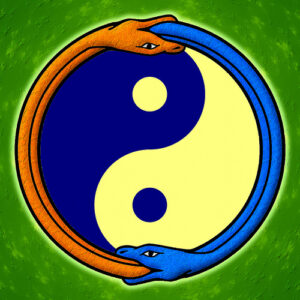I’ve got a panel coming up for CoSine 2013 and decided to do a bit more research than normal. In this case the panel will discuss whether or not the makers of “The Hobbit: An Unexpected Journey” are justified in stretching out the original novel “The Hobbit: There and Back Again” into three movies.
I won’t spoil the discussion with this post. That would be naughty. However, there was one salient portion of that discussion that I’d like to plant a seed with.
In watching the credits for the movie, I discovered that one of the co-writers for the film-adaptation of Tolkien’s children’s novel was Guillermo del Toro. I must admit, this took me by surprise, but the more I thought about it, the more it made sense. I’ve enjoyed del Toro’s work for years, and if my suspicions are in any way close to the mark, then he was a perfect addition. I won’t go into any details about my conclusions regarding the film. However, as I pondered his involvement, the nature of the film and films to come, as well as how all of that relates to the book, something significant occurred to me regarding my own writing and the business I’m in.
In this day and age, one finds that both Hollywood and the Publishing Industry are governed in many respects by what is referred to as “The Formula.” Some say it with avarice in their eyes. Some say it with venom or hopeless resignation or as when referring to a simple hurdle one must overcome in the workplace. Frankly, I don’t think there’s a person in the business who doesn’t have some sort of opinion on The Formula. Granted, there are always successful exceptions to its application, but I think it’s safe to say that The Formula is a standard to which many (most?) of us will aspire in one form or another… at least for the foreseeable future. The trick will be in doing so in “unique,” interesting and/or original ways.
Our opinions about The Formula—as individuals and collectively—are relevant to this discussion. It’s like having an opinion about gravity. There is no debate regarding its existence, merely its effects upon each and every one of us as creative individuals and even upon human society as a whole.
When one is attempting to create fiction in a vacuum, the only consideration is what tale resides inside you and then going through the process of letting it spill out onto some sort of medium. However, most of us do not write in a vacuum. I would venture a guess that most of us are writing for two primary reasons: because we love it and because we want to make a living at it. That last part is fairly important, because in order to achieve it, we have to actually sell our work. In order to do that, we have to shape the tales within us to sometimes exacting standards. People who buy books—from agents to publishers to consumers—have expectations. They have appetites and desires. Furthermore, those appetites and desires are shaped by what has been fed to them over the course of months, years and even decades.
“The Hobbit: There and Back Again” was published in 1937. Over the past seventy-five years the publishing industry (like Hollywood) has changed radically, and on more than one occasion. And so have their appetites. Because their appetites changed, ours did too. And because our appetites changed, theirs did… and vice versa… and vice versa. Allow me to clarify.
 In many respects, our industry is governed (or at least guided) by a flavor of self-fulfilling prophecy that continuously feeds upon itself. Agents and publishers look at what has been successful in the past and then have martini luncheon’s to discuss what they perceive as what might be “the next big thing.” Those discussions are driven by what was successful last month or six months ago or even two years ago. And what came before dictates what should come next based on what these individuals believe they can sell. All of it driven by what consumers paid cash for. The best image I’ve ever seen to depict the nature of this relationship is that of a double Ouroboros. It’s an accurate depiction of the relationship between consumers and creators. Interesting, n’est ce pa?
In many respects, our industry is governed (or at least guided) by a flavor of self-fulfilling prophecy that continuously feeds upon itself. Agents and publishers look at what has been successful in the past and then have martini luncheon’s to discuss what they perceive as what might be “the next big thing.” Those discussions are driven by what was successful last month or six months ago or even two years ago. And what came before dictates what should come next based on what these individuals believe they can sell. All of it driven by what consumers paid cash for. The best image I’ve ever seen to depict the nature of this relationship is that of a double Ouroboros. It’s an accurate depiction of the relationship between consumers and creators. Interesting, n’est ce pa?
So what does this all mean? Granted, I’ve wandered a bit, but for a purpose.
If you’re writing, I suggest you take a look at your project or projects. Do you have an appealing Protagonist that people will give more than a damn about? Do you have a clearly defined Antagonist who stretches your protagonist’s limits. Is their conflict identified fairly early on in the book? Do you grab the reader in the first ten pages and leave them no choice but to turn the next page 250 times in a row? Do you keep your promises and do you avoid illogical surprises? And when you wrap the whole thing up, do you do so with catharsis and an absence of loose ends?
There’s a very specific reason I ask these questions. It is because, nine times out of ten, that’s the standard you’re going to be held to by the folks with the checkbooks and the folks who can get your work in front of the folks with the checkbooks.
Cheers!
Q.
Thanks Eldrich Blake for the image. You can see more of his great work here…


The ‘Formula’: Not all that glitters is gold. haha